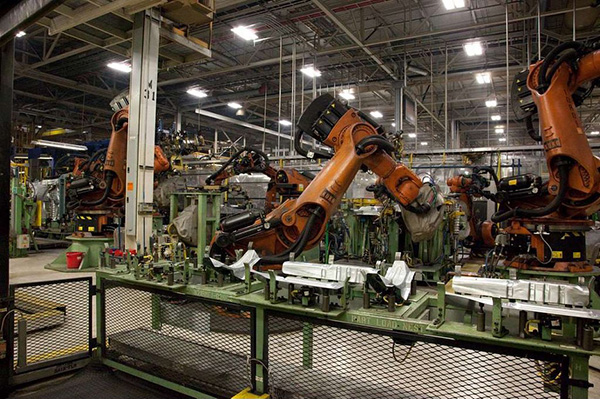Opportunity awaits, but so do the challenges.
When European companies consider expanding into the United States the promise of opportunity shouldn’t overshadow challenges. Geopolitical tensions, economic uncertainty, and technological change have the world and the industrial landscape changing at a rapid clip. Yes, the U.S. is still a crucial market, but succeeding here takes more than ambition—it requires a clear, forward-thinking strategy that anticipates the complexities ahead.
A recent Horváth study surveyed C-level executives from leading companies around the world and revealed a notable shift in business priorities. Cost and profit optimization now dominate the agenda, surpassing past concerns such as workforce development and sustainability. Meanwhile, digital transformation and cybersecurity have risen sharply in importance, underscoring the necessity of adapting to an increasingly connected and vulnerable industrial landscape.
The market is in transition, with traditionally dominant manufacturing nations encountering headwinds. Germany, for example, long considered a global leader in industrial production, now faces sluggish growth projections. The Munich-based Institute for Information and Research (ifo) anticipates a mere 0.4% industrial expansion in 2025. Similarly, inflationary pressures and continuous supply chain disruptions plague both China and the U.S. If these issues persist, some analysts warn that the global manufacturing sector could experience a slowdown in the coming years.
At the same time, we are adjusting to a polycrisis era. Corporate decision-making is being influenced by heightened geopolitical risks, trade tensions, and policy shifts. The global pandemic, semiconductor shortages, war in Ukraine, and the dangers of the Red Sea have all demonstrated the high risk of over-reliance on specific regions for manufacturing inputs.

Despite these uncertainties, manufacturers continue seeking avenues for expansion. The Horváth study found that 80% of executives view deepening relationships with existing customers as a primary growth driver. However, breaking into completely new markets remains a calculated risk, given the financial and operational complexities involved. Indeed, for many organizations with an established multinational footprint, it’s strategically advantageous to prioritize locations where existing manufacturing infrastructure is already in place. This approach, however, highlights the importance of precision and success on the first attempt.
Whether it’s a major player like Nippon Steel seeking to acquire a U.S. company to strengthen production capabilities and compete with China, or a small family-owned business considering its first expansion, what critical factors should guide their decision-making?
Nearly every company is exploring expansion, and competition is already underway. Those still deliberating should find ways to accelerate their decision-making. Even if urgency isn’t immediately apparent, potential tariffs and supply chain disruptions make first- or second-mover advantage crucial.
While reducing costs and increasing profits often drive expansion, manufacturing leaders in our CxO study ranked cybersecurity and digital transformation as the second and third most critical priorities. For labor-intensive companies the right balance between leveraging digital technologies and maintaining traditional labor forces is essential. Poor digital adoption can increase cybersecurity risks and create operational challenges, so a strategic approach is necessary.
Despite strong U.S. economic growth, inflationary pressures and bond market warnings remain concerns. Businesses expanding in the U.S. should continuously assess economic and trade conditions to ensure their strategy aligns with shifting realities. Scenario planning and digital twins are vital tools for mitigating risks and optimizing operations in an evolving landscape.
These external factors, like market conditions, competitive pressures, and geopolitical shifts, should guide expansion decisions rather than knee-jerk reactions. Nevertheless, we see many companies rush to stay ahead without fully considering long-term viability. Mergers, acquisitions, and strategic alliances within the manufacturing sector can significantly impact a company’s ability to scale. Before committing to new investments, companies have to evaluate these dynamics.
Equally important is a deep understanding of both existing and new markets, particularly how expansion will affect distribution channels. Companies must conduct comprehensive assessments of local supply chain and logistics networks while factoring in economic considerations such as tariffs, regulatory environments, and financing costs. The ability to model these variables effectively can be the difference between a smooth expansion and costly miscalculations. Robust forecasting and scenario planning should be an integral part of the decision-making process.
Specific geography also plays a critical role in expansion planning. It’s important that companies determine how new locations will integrate into existing operations and evaluate potential local benefits, including tax incentives and workforce availability. Foreign companies usually misjudge the sheer size and economic diversity of the U.S. and fail to capitalize on the array of regional opportunities that could enhance operational efficiency. A thorough geographic analysis can help avoid logistical pitfalls and maximize incentives.
Finally, businesses must not overlook the foundational elements that support expansion—back-office systems and risk management infrastructure. Enterprise resource planning (ERP) systems and supply chain management tools may seem invisible when they function correctly, but their weaknesses become glaring when disruptions occur. A failure to align these systems with expansion plans can lead to operational breakdowns that are costly to resolve. Conducting a rigorous assessment of IT and operational support capabilities before expansion is essential to ensuring long-term success.
By considering these strategic elements—alignment with corporate objectives, market understanding, geographic positioning, and operational infrastructure—companies can approach U.S. manufacturing expansion with greater confidence and resilience, setting themselves up for sustained growth in an increasingly competitive environment.
The bottom line is, yes, U.S. expansion presents challenges, but those who plan carefully and move decisively stand to gain a significant competitive edge. By taking a proactive, technology-driven, and strategic approach, manufacturers can position themselves for sustainable success in the U.S. market.

About the Author:
Tony Klimas, Horváth USA President and partner, has more than 25 years of consulting experience with a specialization in finance transformation and enabling technologies. He has held practice leadership roles and led solution development, most recently serving as a Partner in one of the “Big Four” firms. An Ohio native and proud first-generation American, he attended the US Naval Academy in Annapolis, MD majoring in Mathematics and subsequently serving as an Officer aboard several Navy ships. After leaving active duty, he received his MBA in finance, graduating with honors from the Kelley School at Indiana University in Bloomington. He worked in finance and accounting at a major automotive supplier before moving to consulting. He initially worked on ERP projects and later focused on finance transformation. As an experienced partner and leader, he has spent significant time developing innovative solutions and serving clients. In addition to his professional role, Mr. Klimas serves on the Southeast Regional Board of the United Service Organizations (USO), a charity organization that supports US Veterans and active-duty service members.
In this episode, I sat down with Beejan Giga, Director | Partner and Caleb Emerson, Senior Results Manager at Carpedia International. We discussed the insights behind their recent Industry Today article, “Thinking Three Moves Ahead” and together we explored how manufacturers can plan more strategically, align with their suppliers, and build the operational discipline needed to support intentional, sustainable growth. It was a conversation packed with practical perspectives on navigating a fast-changing industry landscape.